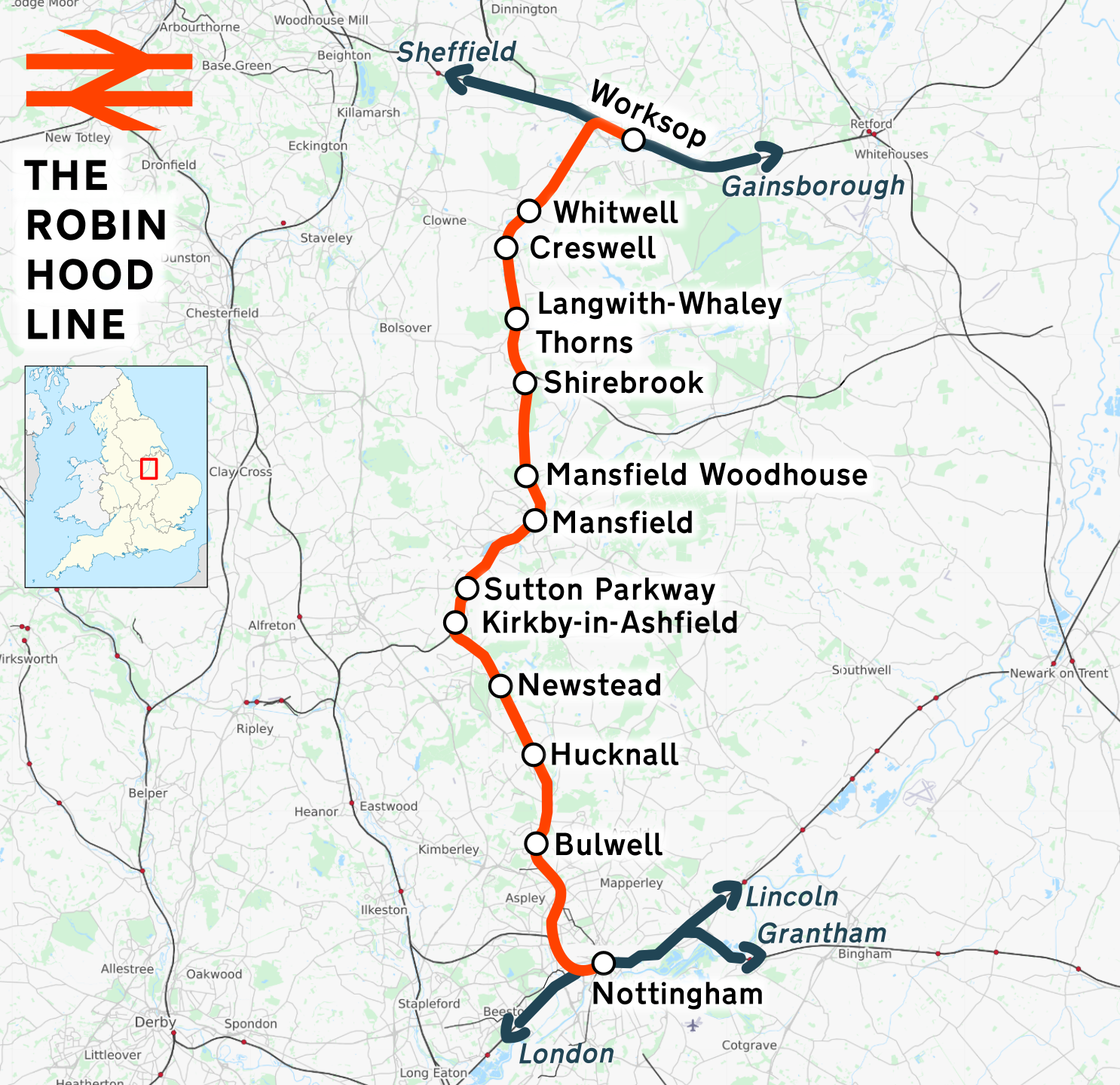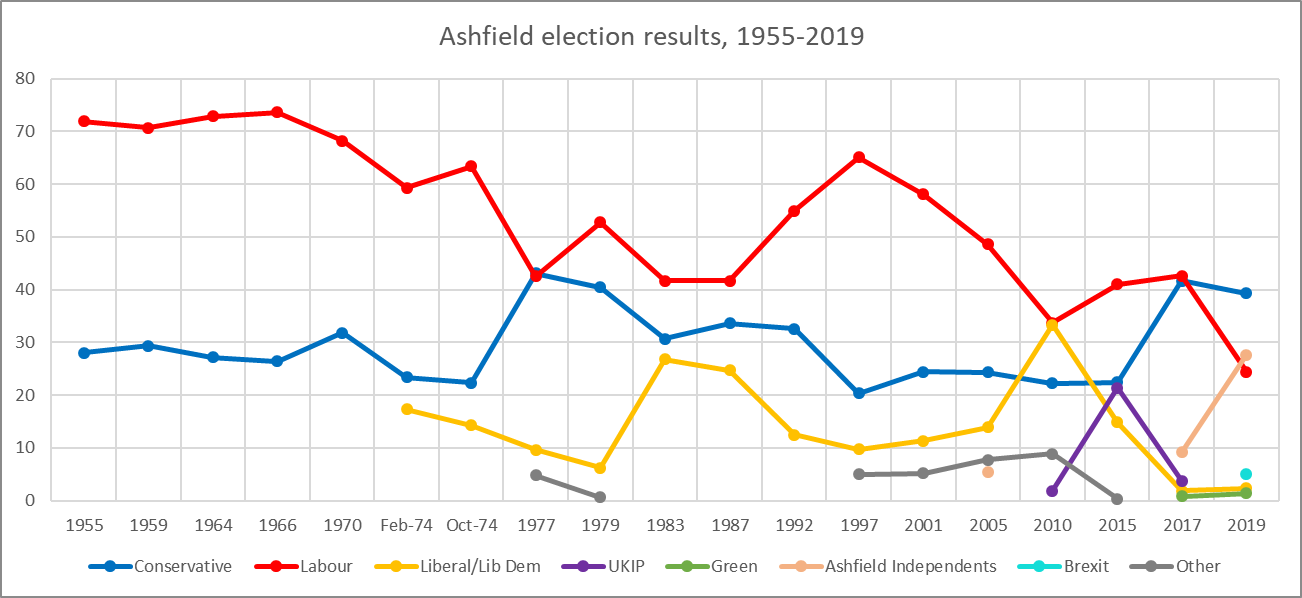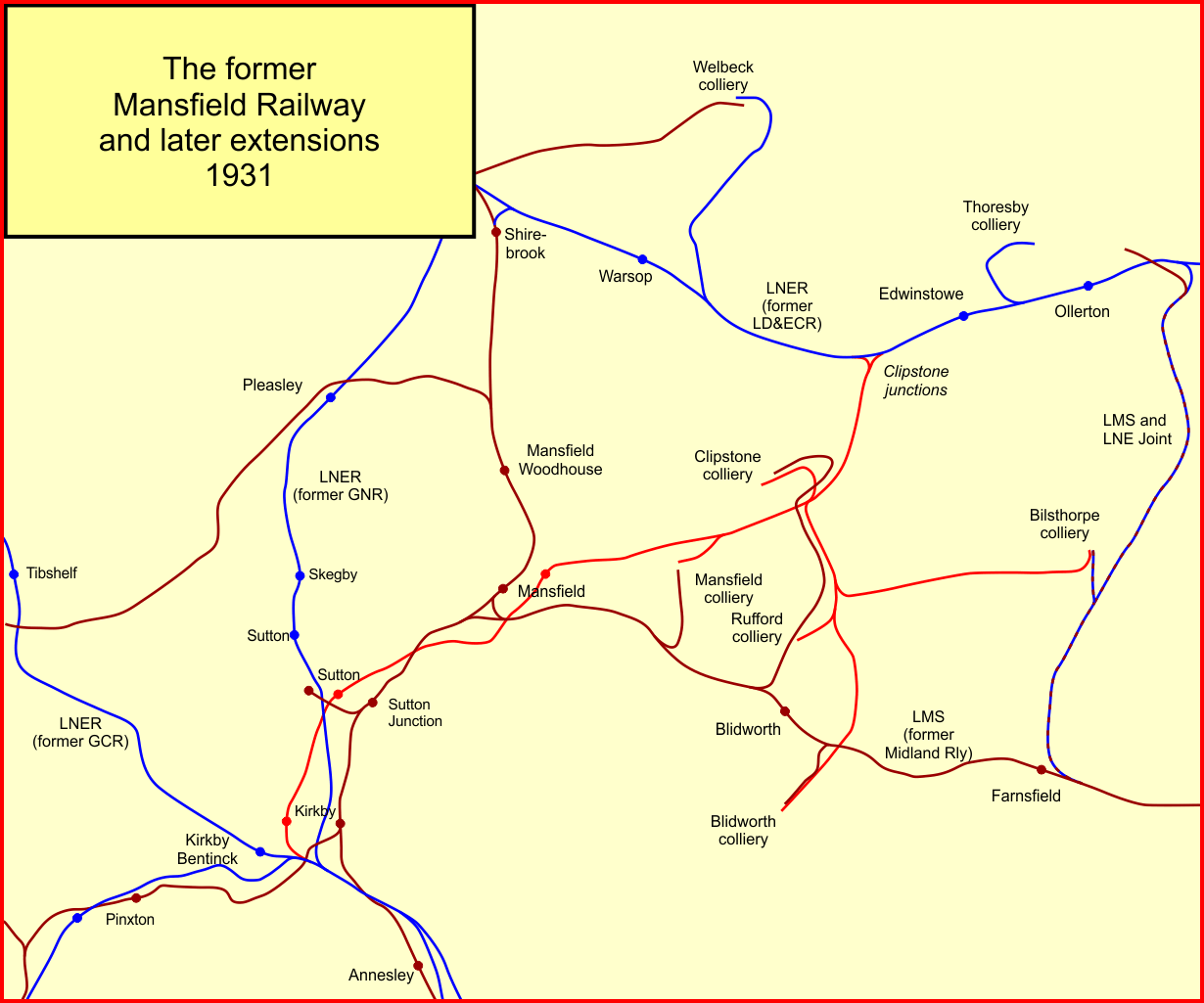|
Kirkby-in-Ashfield
Kirkby-in-Ashfield is a market town in the Ashfield District of Nottinghamshire, England. With a population of 25,265 (according to the 2001 National Census), it is a part of the wider Mansfield Urban Area. The Head Offices of Ashfield District Council are located on Urban Road in the town centre. Overview Kirkby-in-Ashfield lies on the eastern edge of the Erewash Valley which separates Nottinghamshire and Derbyshire. Kirkby, as it is locally known, was originally a Danish settlement (Kirk-by translates as 'Church Town' in Danish) and is a collection of small villages including Old Kirkby, The Folly (East Kirkby), Nuncargate and Kirkby Woodhouse. It is mentioned in the ''Domesday Book'' and has two main churches: St Wilfrid's, a Norman church, which was gutted by fire on 6 January 1907 but quickly re-built; and St Thomas', built in the early 1910s in neo-gothic style. History Kirkby Castle Kirkby Castle is said to have dated back to at least the 13th Century. Its owner i ... [...More Info...] [...Related Items...] OR: [Wikipedia] [Google] [Baidu] |
Kirkby-in-Ashfield Railway Station
Kirkby-in-Ashfield railway station serves the town of Kirkby-in-Ashfield in Nottinghamshire, England. The station is on the Robin Hood Line and is operated by East Midlands Railway between Nottingham and Worksop. History Kirkby-in-Ashfield was served by three railway stations: * Kirkby-in-Ashfield Central station (closed 1962) was located 700m to the west of the present station on the former Great Central Railway Mansfield Central branch. * Kirkby-in-Ashfield East station (closed 1964) was 350m to the east of the present station on the former Midland Railway Nottingham to Worksop line. * Kirkby Bentinck station (closed 1963) was located in Bentinck Town to the south west of Kirkby-in-Ashfield, on the former Great Central Railway London to Manchester main line. The closures of these lines left the area with no passenger rail services until the reopening of the former Midland Railway route, now known as the 'Robin Hood Line', in the 1990s. However, by this time British Rail ... [...More Info...] [...Related Items...] OR: [Wikipedia] [Google] [Baidu] |
Kirkby-in-Ashfield East Railway Station
Kirkby-in-Ashfield East railway station was a station in Kirkby-in-Ashfield, Nottinghamshire. It was opened in 1848, and was located on the Midland Railway's Mansfield Branch Line (Now the Robin Hood Line). It was one of three stations that served the town. The others were both Kirkby-in-Ashfield Central and Kirkby Bentinck. The station was replaced by the modern-day station of the same name (minus the East name). History Opened by the Midland Railway, it became part of the London, Midland and Scottish Railway during the Grouping of 1923. The station then passed on to the London Midland Region of British Railways on nationalisation in 1948, the station survived use until 1965. Stationmasters *S. Osman 1873 - 1874 (resigned 30 June 1874) *John Mercer 1874 - 1890 (formerly station master at Worthington) *William Tunn 1890 - 1896 (formerly station master at Fiskerton) *Henry St. John Newell 1896 - 1901 (committed suicide 23 October 1901) *Albert William Niblett 1902 - 1910 * ... [...More Info...] [...Related Items...] OR: [Wikipedia] [Google] [Baidu] |
Kirkby-in-Ashfield Central Railway Station
Kirkby-in-Ashfield Central is a former railway station that served the town of Kirkby-in-Ashfield, Nottinghamshire. History The station was opened in 1917 by the Mansfield Railway along with Mansfield Central and Sutton-in-Ashfield Central. The line, including its stations, was worked by the Great Central Railway and became part of the LNER in 1923 and subsequently British Rail British Railways (BR), which from 1965 traded as British Rail, was a state-owned company that operated most of the overground rail transport in Great Britain from 1948 to 1997. It was formed from the nationalisation of the Big Four (British ra ...ways in 1948. The station was conventional and spacious. Most passenger services plied between Nottingham Victoria and Mansfield Central, with some extending to Edwinstowe and Ollerton. Goods and timetabled passenger services ceased on 3 January 1956, though Summer weekend excursion traffic to Scarborough, Cleethorpes, Skegness and Mablethorpe con ... [...More Info...] [...Related Items...] OR: [Wikipedia] [Google] [Baidu] |
Robin Hood Line
The Robin Hood Line is a railway line running from Nottingham to Worksop, Nottinghamshire, in the United Kingdom. The stations between Shirebrook and Whitwell (inclusive) are in Derbyshire. Passenger services are operated by East Midlands Railway. The line in its present form opened to passengers in stages between 1993 and 1998. Following the Beeching cuts of the 1960s, the line had been freight-only. The cuts had left Mansfield as one of the largest towns in Britain without a railway station. History The majority of the current Robin Hood Line re-uses the former Midland Railway (MR) route from Nottingham to Worksop. However, due to rationalisation leading to track removal in order to save the costs of maintaining the tunnel north of Annesley, the through route was severed in the 1970s. Northwards from Nottingham, the freight-only line remained intact as far as Newstead, where it had served the now closed Newstead Colliery. Southwards from Worksop, the line followed the ... [...More Info...] [...Related Items...] OR: [Wikipedia] [Google] [Baidu] |
Ashfield (UK Parliament Constituency)
Ashfield is a constituency represented in the House of Commons of the UK Parliament by Lee Anderson of the Conservative Party. The constituency is in the English county of Nottinghamshire, East Midlands; located to the north west of the city of Nottingham in the Erewash Valley along the border with neighbouring county Derbyshire. Ashfield was part of the Red Wall which by and large, voted Conservative in the 2019 general election. In the 2016 referendum on membership of the European Union, Ashfield voted 70% in favour of Brexit. Constituency profile The seat contains the market towns of Kirkby-in-Ashfield, Sutton-in-Ashfield, Huthwaite and Eastwood. Coal mining was formerly a significant part of the economy. Boundaries 1955–1974: The Urban Districts of Eastwood, Kirkby-in-Ashfield, and Sutton-in-Ashfield, and in the Rural District of Basford the parishes of Annesley, Bestwood Park, Brinsley, Felley, Linby, Newstead, Papplewick, and Selston. 1974–1983: T ... [...More Info...] [...Related Items...] OR: [Wikipedia] [Google] [Baidu] |
Ashfield, Nottinghamshire
Ashfield () is a local government district in Nottinghamshire, England. The population of Ashfield was 127,200 in 2018. The district is mostly urban and forms part of both the Nottingham and Mansfield Urban Areas. There are three towns in the district; Sutton-in-Ashfield, Kirkby-in-Ashfield and Hucknall. The district was formed on 1 April 1974, under the Local Government Act 1972, by the merger of urban districts of Hucknall, Kirkby-in-Ashfield, Sutton-in-Ashfield and parts of Basford Rural District, namely the parishes of Annesley, Felley and Selston. The largest settlement is Sutton-in-Ashfield. Towns and villages in the district include the following: * Annesley * Annesley Woodhouse * Hucknall * Huthwaite * Jacksdale * Kirkby-in-Ashfield * Selston * Skegby * Sutton-in-Ashfield * Stanton Hill * Teversal * Underwood Politics Elections to the district are held every 4 years, with currently 35 councillor A councillor is an elected representative for a lo ... [...More Info...] [...Related Items...] OR: [Wikipedia] [Google] [Baidu] |
Ashfield District
Ashfield () is a local government district in Nottinghamshire, England. The population of Ashfield was 127,200 in 2018. The district is mostly urban and forms part of both the Nottingham and Mansfield Urban Areas. There are three towns in the district; Sutton-in-Ashfield, Kirkby-in-Ashfield and Hucknall. The district was formed on 1 April 1974, under the Local Government Act 1972, by the merger of urban districts of Hucknall, Kirkby-in-Ashfield, Sutton-in-Ashfield and parts of Basford Rural District, namely the parishes of Annesley, Felley and Selston. The largest settlement is Sutton-in-Ashfield. Towns and villages in the district include the following: * Annesley * Annesley Woodhouse * Hucknall * Huthwaite * Jacksdale * Kirkby-in-Ashfield * Selston * Skegby * Sutton-in-Ashfield * Stanton Hill * Teversal * Underwood Politics Elections to the district are held every 4 years, with currently 35 councillors being elected from 23 wards. Since 2018 the council has b ... [...More Info...] [...Related Items...] OR: [Wikipedia] [Google] [Baidu] |
St Wilfrid's Church, Kirkby-in-Ashfield
St Wilfrid's Church, Kirkby-in-Ashfield is a parish church in the Church of England in Kirkby-in-Ashfield, Nottinghamshire. The church is Grade II listed by the Department for Digital, Culture, Media and Sport as it is a building of special architectural or historic interest. History The medieval church was destroyed by fire and a new church was erected in 1907 by the Duke of Portland to a design by the architect Louis Ambler. The church has one of the most beautiful interiors with a fine reredos and chancel screen. The church of St Wilfrid stands on a site believed to have been first used for a church in the seventh century AD and an ancient church is mentioned in the Domesday survey of 1086.The Church of England, Available at: http://www.achurchnearyou.com/kirkby-in-ashfield-st-wilfrid/ See also * Listed buildings in Kirkby-in-Ashfield Sources {{Reflist Kirkby-in-Ashfield Kirkby-in-Ashfield is a market town in the Ashfield District of Nottinghamshire, England. ... [...More Info...] [...Related Items...] OR: [Wikipedia] [Google] [Baidu] |
St Thomas' Church, Kirkby-in-Ashfield
St Thomas’ Church, Kirkby-in-Ashfield is a parish church in the Church of England in Kirkby-in-Ashfield, Nottinghamshire. History The foundation stone was laid on 27 July 1901 by the Duke of Portland. The designs of the church were drawn up by the architect Louis Ambler. The church cost over £5,000 (), of which £2,000 was donated by the Duke of Portland. The church was consecrated on 23 May 1903 by the Bishop of Southwell __NOTOC__ The Bishop of Southwell and Nottingham is the diocesan bishop of the Church of England Diocese of Southwell and Nottingham in the Province of York.''Crockford's Clerical Directory'', 100th edition, (2007), Church House Publishing. . Th .... A Lady Chapel was designed by E Watkinson and built between 1936 and 1937, entirely by voluntary spare time labour of craftsmen and helpers of the congregation. It was dedicated by the Bishop of Southwell on 17 April 1937. Organ The organ is by Wadsworth Brothers of Manchester. References {{DEFAULTSOR ... [...More Info...] [...Related Items...] OR: [Wikipedia] [Google] [Baidu] |
Kirkby Bentinck Railway Station
Kirkby Bentinck railway station was a station serving the town of Kirkby-in-Ashfield, Nottinghamshire, England. It was on the Annesley branch of the Manchester, Sheffield and Lincolnshire Railway, later the Great Central Railway on the section from Nottingham Victoria to Sheffield Victoria. The station was opened in January 1893 and closed in March 1963 after 70 years in service. Until 1 August 1925 it was named Kirkby & Pinxton station, and it also appeared on some Ordnance Survey Ordnance Survey (OS) is the national mapping agency for Great Britain. The agency's name indicates its original military purpose (see ordnance and surveying), which was to map Scotland in the wake of the Jacobite rising of 1745. There was a ... maps as Kirkby & Bentinck station. Present day Nothing remains of Kirkby Bentinck station apart from two concrete poles that held the station sign and the station master's house on Church Hill. The site is now used for agriculture. References Ex ... [...More Info...] [...Related Items...] OR: [Wikipedia] [Google] [Baidu] |
Mansfield Railway
The Mansfield Railway was an eleven-mile railway line in Nottinghamshire, England. It was built to serve collieries opening in the coalfield around Mansfield, and ran between junctions at Clipstone and Kirkby-in-Ashfield on the Great Central Railway. It opened in 1916 and was worked by the GCR. Passenger stations were opened on the line, although, at the date of opening, road bus competition was already dominant. The passenger service was withdrawn in 1956 and the line closed in stages as collieries ceased work, completely ending operation in 2003. Prior railways Railways had existed in the immediate area of Mansfield for many years. The first proper railway had been the Mansfield and Pinxton Railway of 1819, built for the purpose of conveying coal from Pinxton Basin on the Cromford Canal. It was a horse-drawn edge railway.Vanags, John, ''The Mansfield and Pinxton Railway'', The Old Mansfield Society, Mansfield, 2001, , pages 17 and 23 The Midland Railway established a prese ... [...More Info...] [...Related Items...] OR: [Wikipedia] [Google] [Baidu] |
Harold Larwood
Harold Larwood, MBE (14 November 1904 – 22 July 1995) was a professional cricketer for Nottinghamshire County Cricket Club and the England cricket team between 1924 and 1938. A right-arm fast bowler who combined unusual speed with great accuracy, he was considered by many commentators to be the finest and the fastest fast bowler of his generation and one of the fastest bowlers of all time. He was the main exponent of the bowling style known as "bodyline", the use of which during the Marylebone Cricket Club (MCC) tour of Australia in 1932–33 caused a furore that brought about a premature and acrimonious end to his international career. A coal miner's son who began working in the mines at the age of 14, Larwood was recommended to Nottinghamshire on the basis of his performances in club cricket, and rapidly acquired a place among the country's leading bowlers. He made his Test debut in 1926, in only his second season in first-class cricket, and was a member of the 1928� ... [...More Info...] [...Related Items...] OR: [Wikipedia] [Google] [Baidu] |






